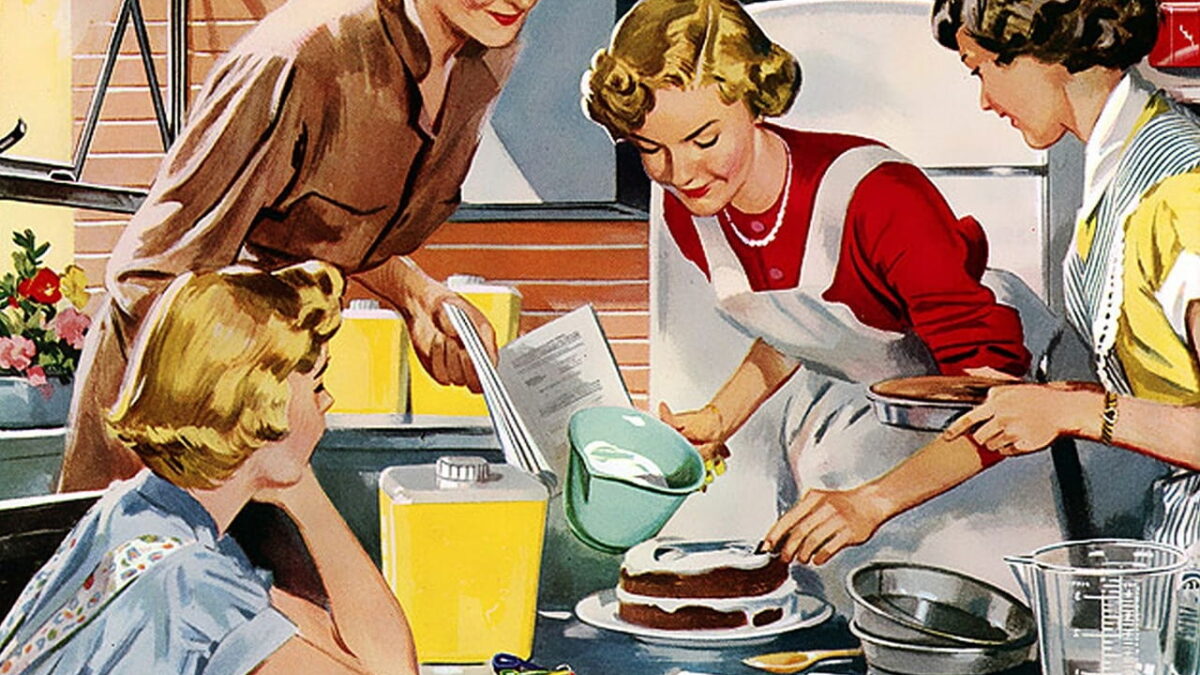
If you are thinking of giving your daughter a Hello Kitty tea set or your son a Transformer, you may want to reconsider. There is a growing movement to abolish the pink-blue divide in children’s toys. It began with a few fringe Internet activists, but has gained steam.
Last year Target announced it would remove gender labeling in its toy aisles. This spring the White House hosted a day-long summit on the hazards of boys’ and girls’ toys. Gender-specific play apparently limits a child’s life prospects and may even endanger the nation’s economic future. Could that be right?
Valerie Jarrett, a senior advisor to President Obama, opened the White House gathering by reminding participants that “changing culture is not necessarily easy and doesn’t happen overnight, but we can do it if we work together.” Scholars and activists committed to Jarrett’s vision shared their findings and insights. Representatives from companies such as Mattel, Disney, and Lego were present as well. Their role was to absorb the lessons and to explain how they planned to help break down gender stereotypes so “children could dream without limits.”
This summit was not a response to public outcry. In a 2015 market survey, only 28 percent of Americans agreed that “The toy industry perpetuates gender stereotypes and should be marketing every toy to both boys and girls.” But public opinion may be changing. Among millennials, 40 percent agreed.

Children Are Not Gender-Neutral
The media is full of excited stories heralding the revolution in children’s play. This recent headline in Time is typical: “The Next Generation of Kids Will Play With Gender Neutral Toys.” But children are not gender-neutral, and they famously resist efforts to make them so. If 40 percent of millennials think otherwise, that’s probably because they haven’t had kids yet.
Parents and teachers should certainly expose their kids to a wide range of toys and play, and teach them to accept kids who enjoy gender non-conforming toys. When toy companies rigidly classify certain toys as girl-only or boy-only, that may create a stigma against those who cross the line. Overt signage is superfluous anyway. So let’s hope other retailers follow Target’s example.
But the crusade promoted by the White House is not about tolerance for non-conformers. Its goal is to re-socialize the majority of gender-typical children toward gender neutrality. Jarret is right that it won’t be easy. With few exceptions, children are powerfully drawn to sex-stereotyped play.
Parents who read too much Judith Butler in college and view gender as fluid and malleable may be startled by the counterevidence their three-year-olds provide. The usually eloquent Julia Turner, editor of Slate, became tongue-tied a few weeks ago when she tried to explain a mysterious development at home: Her little twin sons were obsessed with wheeled objects—particularly cement mixers. Parenthood, she confessed, had “complicated” her worldview. Turner kept affirming her loyalty to the gender-is-a-social-construct school. But then, referring to her sons’ insistent boyishness, she uttered four heretical words: “There’s a there there…”
Indeed there is. And it takes a liberal arts degree not to see it. A 2012 cross-cultural study on sex differences confirmed what most of us see: despite some exceptions, females tend to be more sensitive, esthetic, sentimental, intuitive, and tender-minded, while males tend to be more utilitarian, objective, unsentimental, and tough-minded.
The female penchant for nurturing play and the male propensity for rough-and-tumble hold cross-culturally and even cross-species. Among our close relatives such as rhesus and vervet monkeys, researchers have found that females play with dolls far more than do their brothers, who prefer balls and toy cars. It seems unlikely the monkeys are acting out a culturally manufactured gender binary. Something else is going on. Most scientists attribute typical male/female differences to some yet-to-be understood combination of biology and culture.
Being a Boy or Girl Is Not a Disease
How do gender neutralists respond? They acknowledge that biology plays a role in children’s play preferences, but insist culture can intensify or diminish them—and ought to be recalibrated toward diminishment. Even if most little girls are fixated on dolls and boys on trucks, that is no reason for parents not to energetically correct them.
Hunter College psychologist Virginia Valian, for example, argues: “We do not accept biology as destiny … We vaccinate, we inoculate, we medicate… I propose we adopt the same attitude toward biological sex differences.” Valian is correct—we do not accept biology as destiny.
But her analogy is ludicrous. We vaccinate, inoculate, and medicate children against disease. Being a typical little boy or girl is not a pathology in need of a cure. Failure to protect children from smallpox, diphtheria, or measles places them in harm’s way. There is no such harm in allowing often-intense sex differences to flourish in early childhood.
The White House summit was heavy on activists, motivational speakers, and thought leaders but light on evidence. One presenter, feminist sociologist Elizabeth Sweet, says gendered marketing of toys is more aggressive today than ever before. She has accused the toy industry (“largely run by men”) of marketing toys to girls that convey an insidious message: “Girls can be anything—as long as it’s passive and beauty-focused.” But are girls today really being held back? Has any generation of girls ever been offered a greater variety of opportunities and encouragements?
What Activists Can Learn From Practitioners
The White House invited the toy company representatives so they could learn from the gender scholars. Too bad it wasn’t the other way around. Some of the best research on children’s play comes from toy manufactures. The activists are keen on getting more girls into science and engineering. For that, they say it’s critical to interest girls in construction sets. That is no easy task. But Lego figured it out.
Lego spent four years investigating and experimenting. In one study, boys and girls were asked to build a castle. For the boys, the castle was just the hastily constructed scene in which the main event—the battle between the Lego figures—took place. For the girls, the castle itself was central, and they wanted to know what was going on inside. Unlike the boys, the girls wanted detailed, personalized characters, so they could imagine them as friends.
Here is a toy that captures the imagination of vast numbers of little boys:

Here is what works for millions of little girls:

Lego’s spectacular success with these girl-specific construction sets is now an industry legend. But the gender neutralists were not pleased. Sweet told the Wall Street Journal “pinkified building sets may bring more girls into building but they still send the clear message that girls are fundamentally less capable than boys when it comes to building.” Angry protests followed, including an online petition with nearly 70,000 signatures accusing Lego of “selling out” girls.
Lego isn’t selling out its millions of girl customers. But the activists are certainly underestimating them. More than 30 years ago, Vivian Gussin Paley, a beloved kindergarten teacher at the Chicago Laboratory School, worried girls might be missing out on the benefits of boys’ superhero play. Her observations of the “doll corner,” however, assuaged her fears.
Although typical girl play seems relatively calm and passive on the surface, Paley learned that girls are interested in their own kind of domination. Their play is full of conflict and imaginary power struggles, and their fantasies are just as complex, intense, and inventive as boys’—but manifestly different.
As Paley explained, “Mothers and princesses are as powerful as any superheroes the boys can devise.” She saw these choices weren’t foisted upon the girls; they were self-imposed and self-enforced, which meant that “no amount of adult subterfuge or propaganda deflects the five-year-old’s passion for segregation by sex.” Paley grasped a simple truth that seems to be getting lost: Ignoring genuine differences between boys and girls can be just as misguided as creating differences where none exist.
A final point: Lego did test-market a set that met most of the neutralists’ specifications. It was called “Research Lab,” and featured three busily engaged female scientists:

Now I personally found it quite affirming to see middle-aged, responsibly proportioned, professional women finally given their due in Legoland. It remains to be seen whether little girls will be equally captivated. But in the meantime, some activists were still not satisfied. Why did they have to be wearing lipstick?









